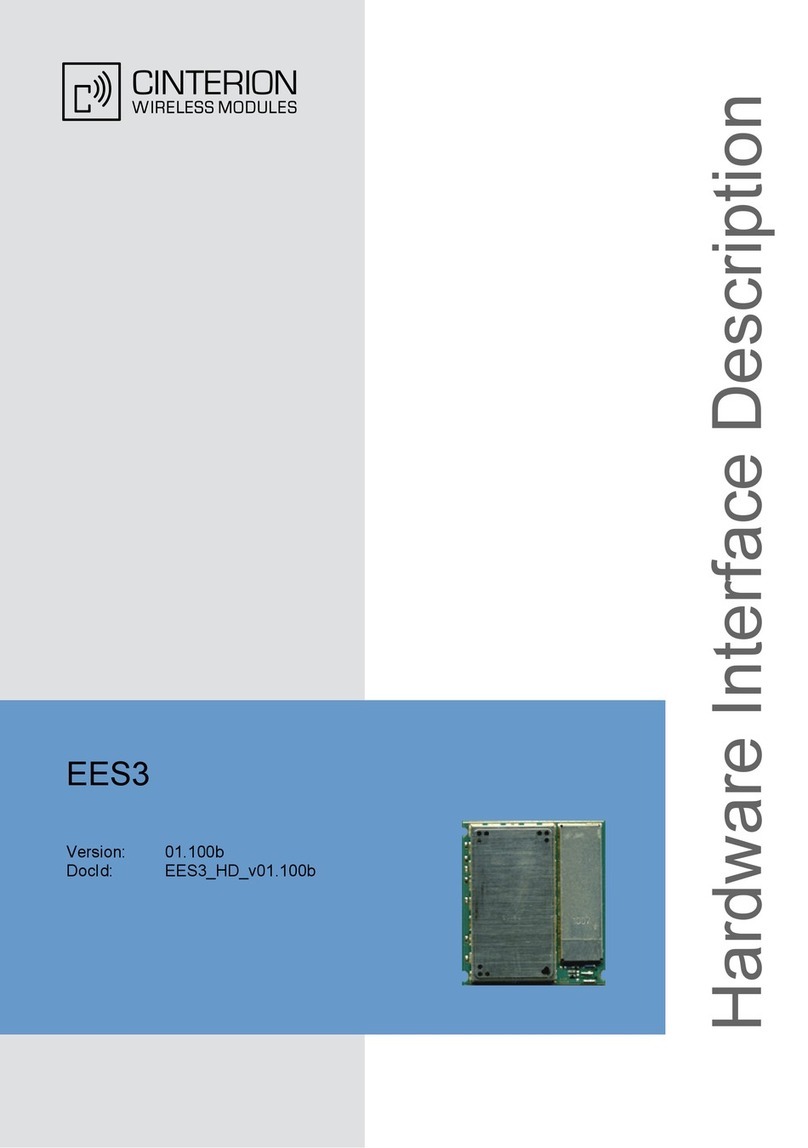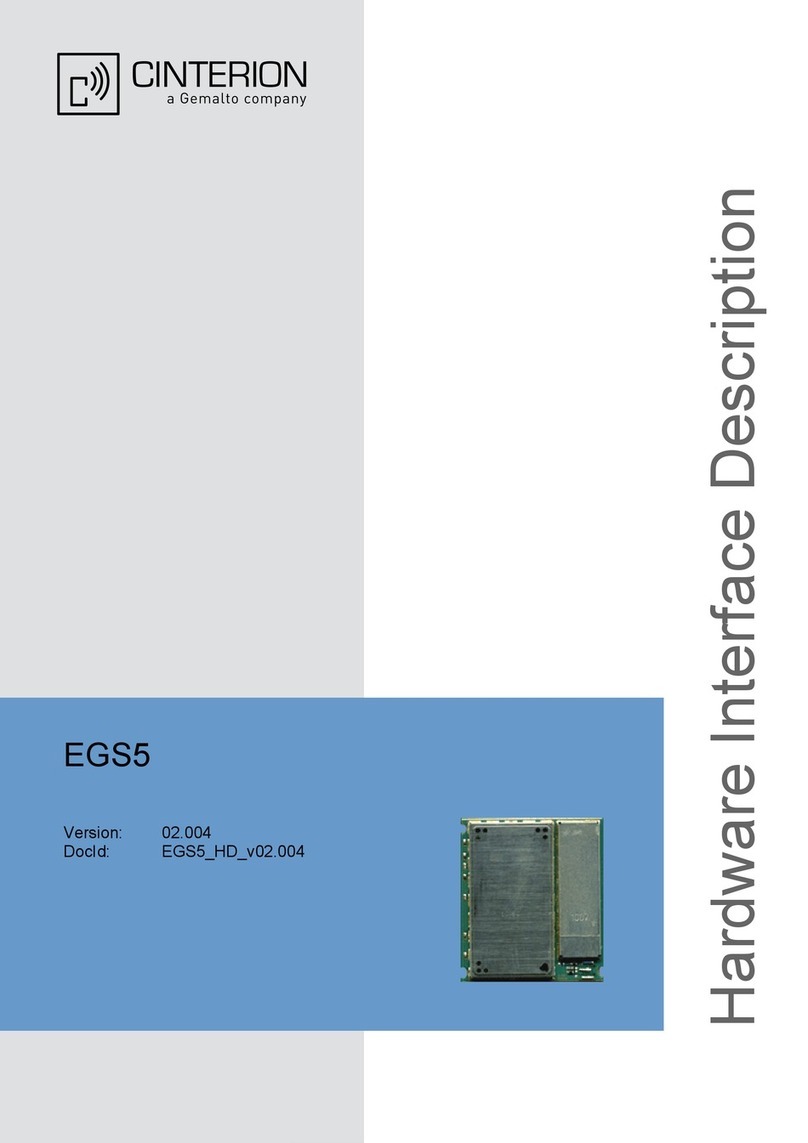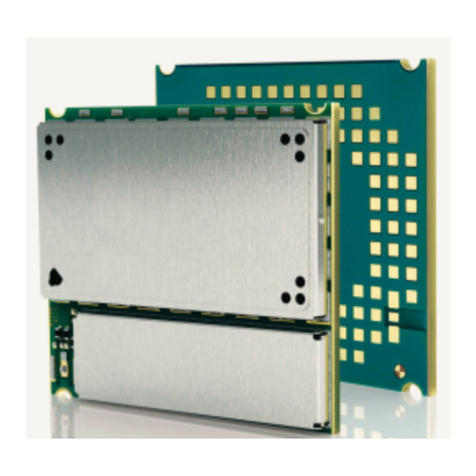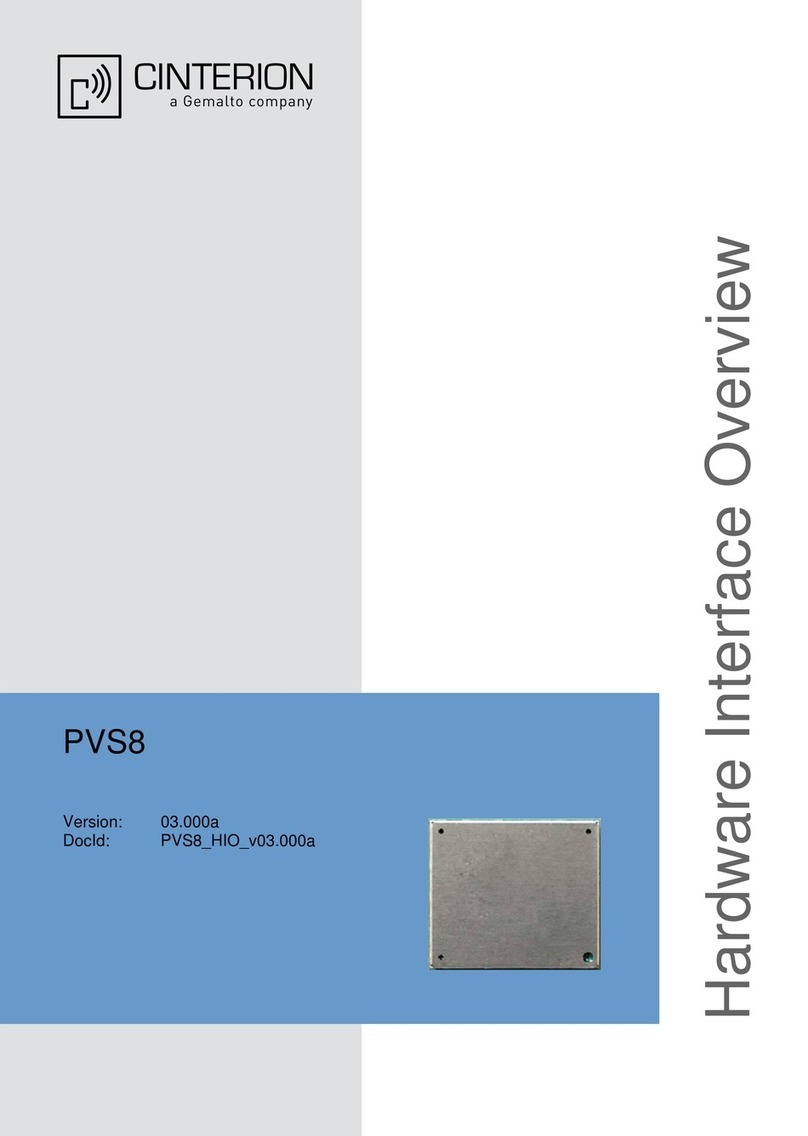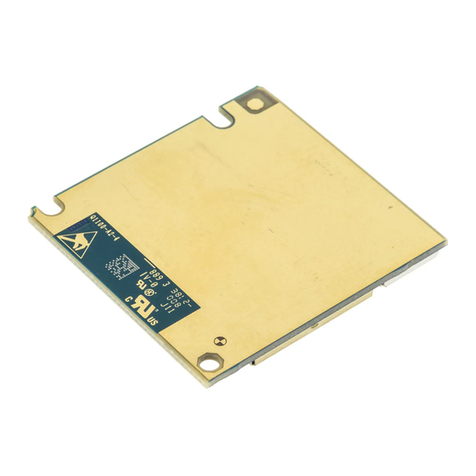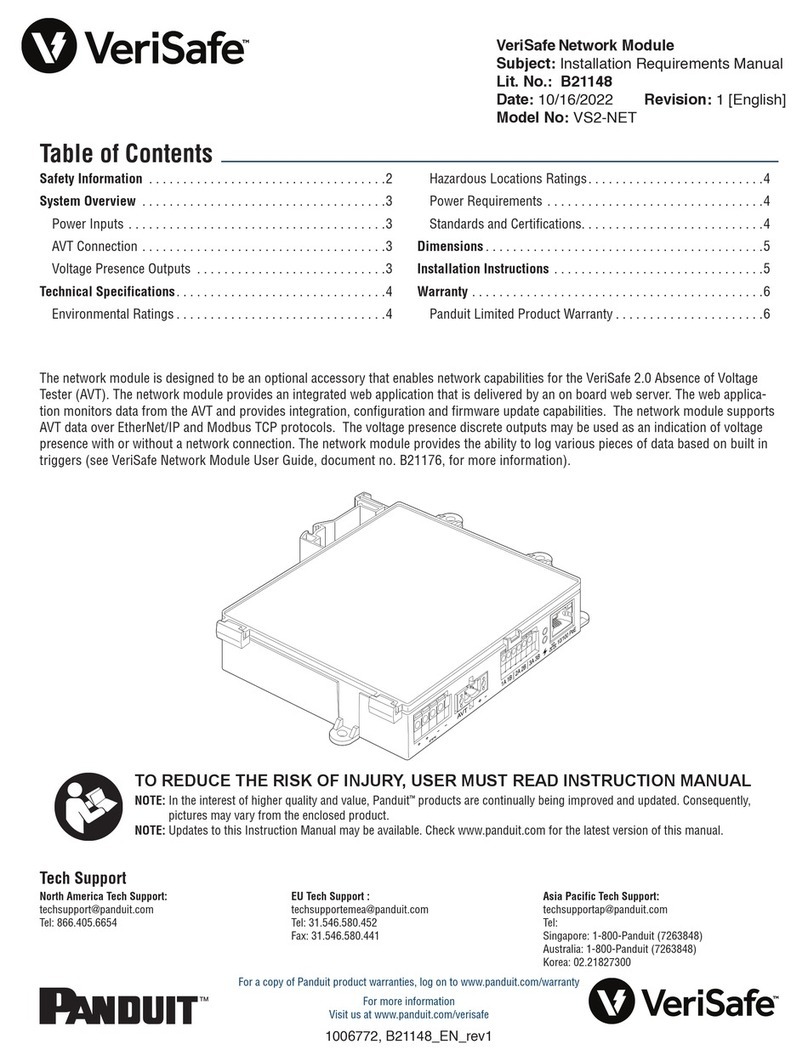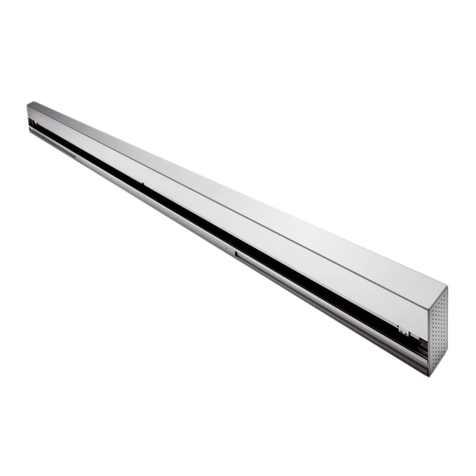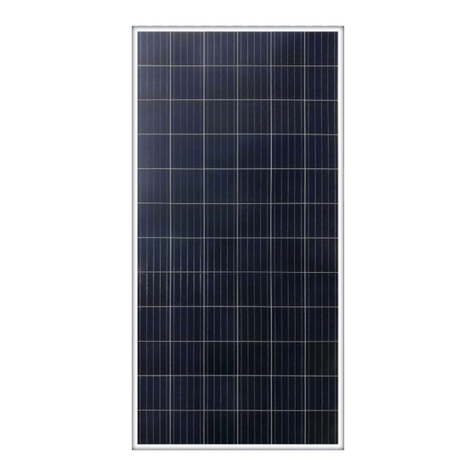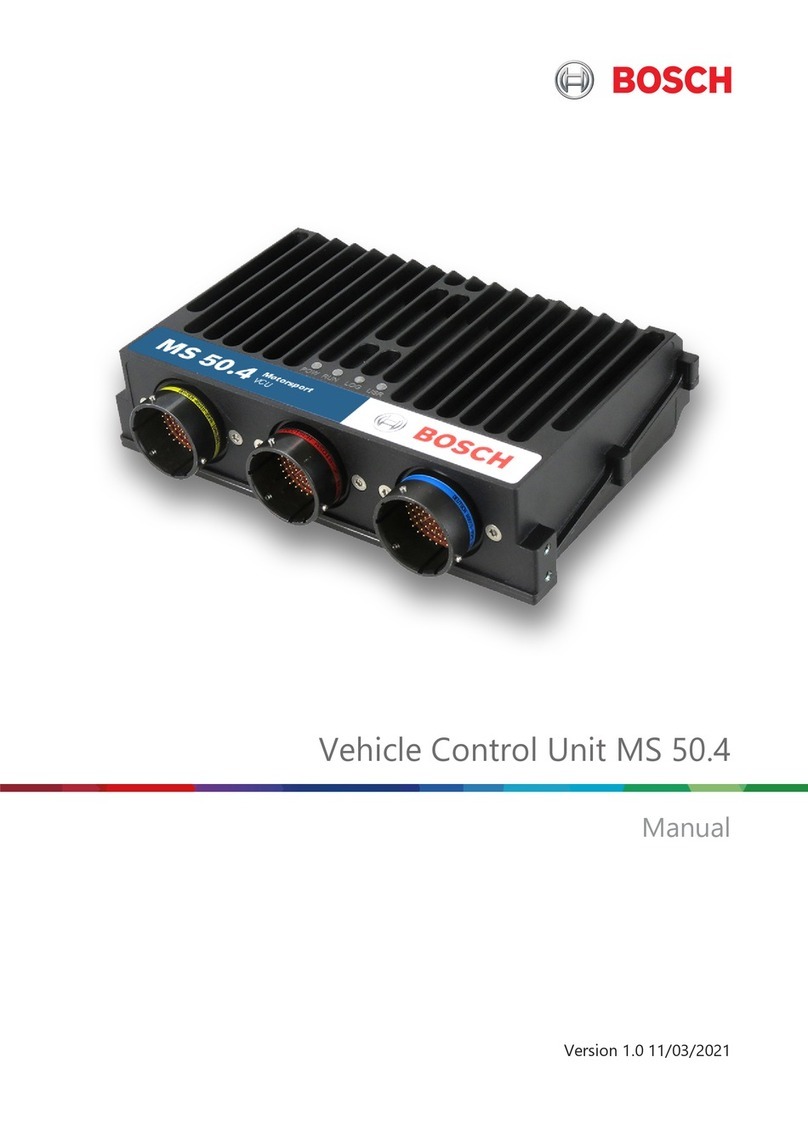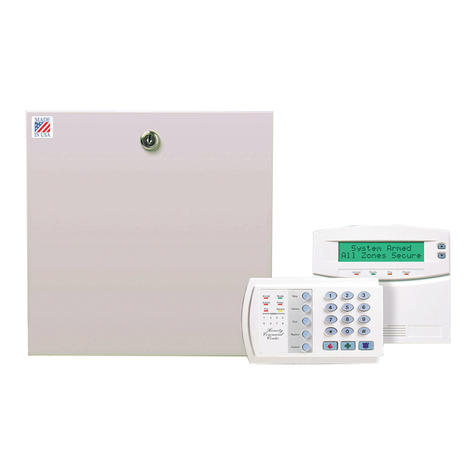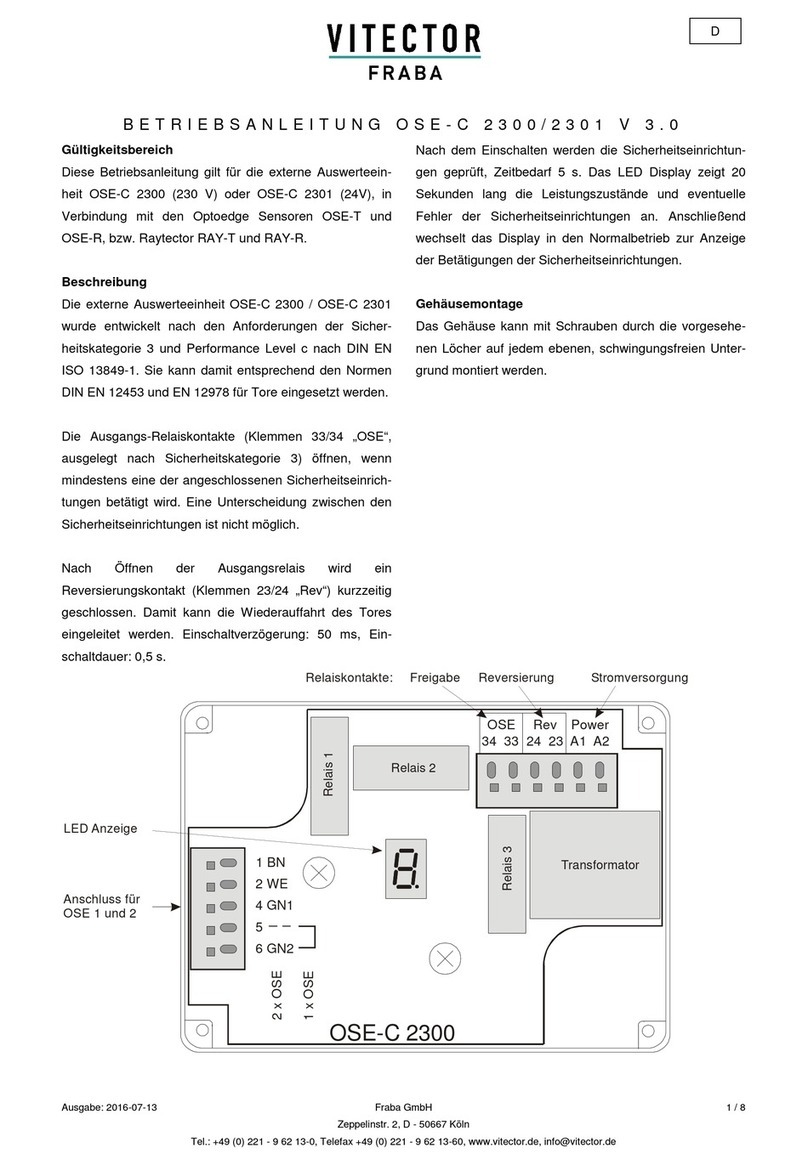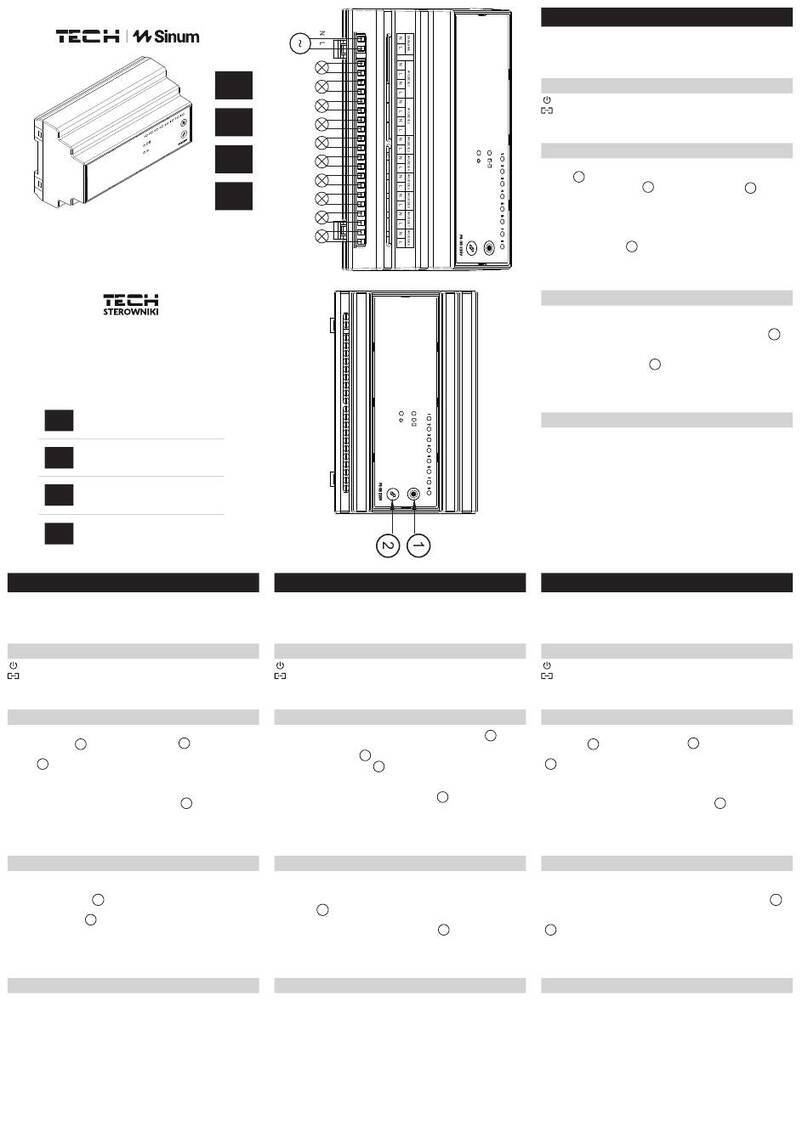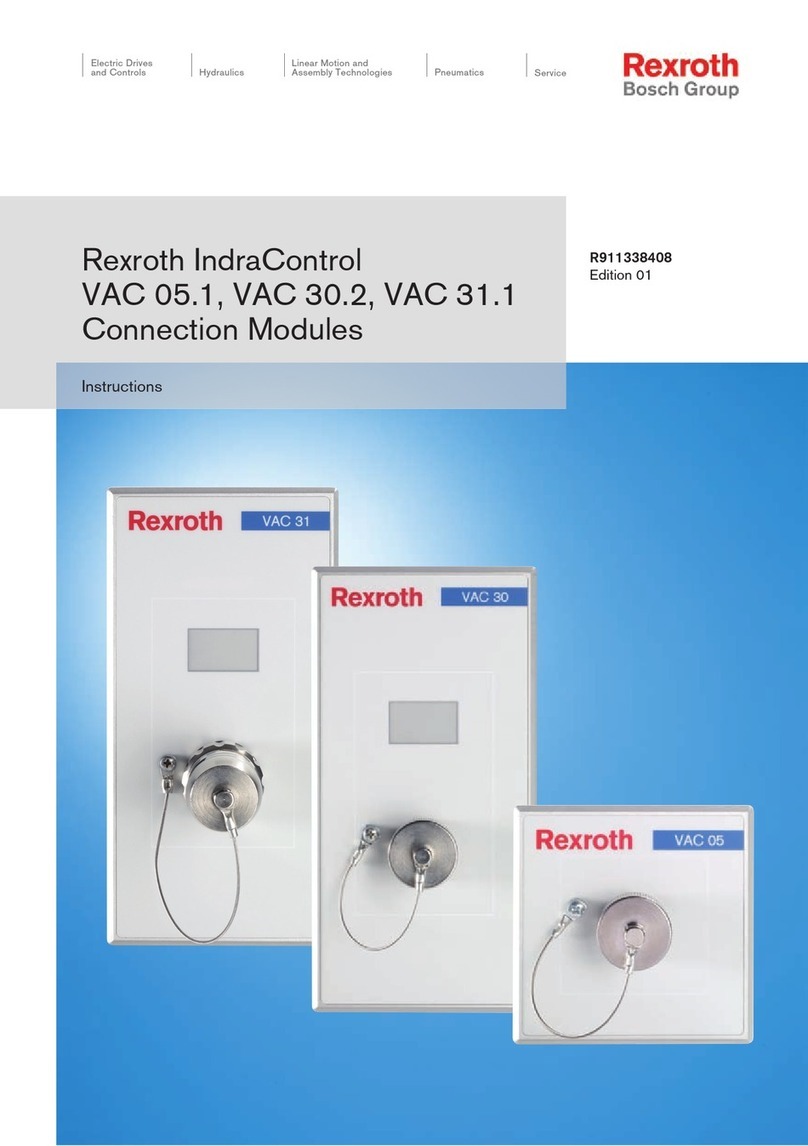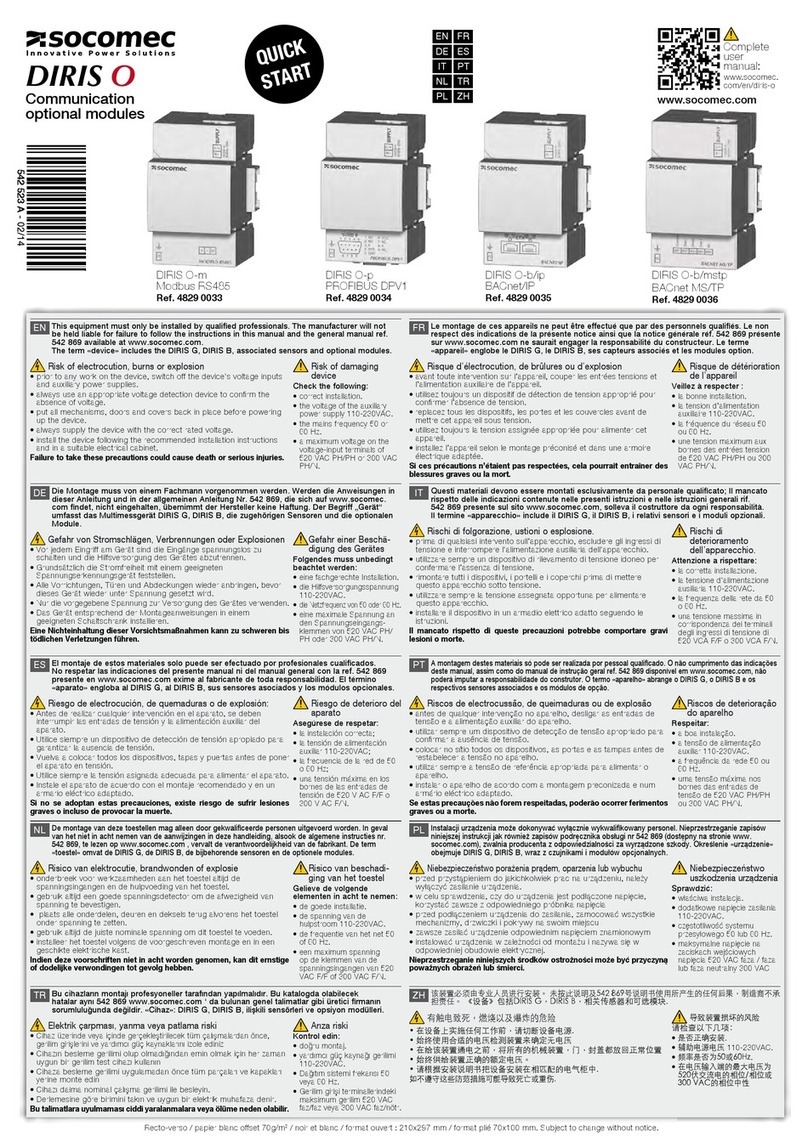Cinterion EGS3 User manual

EGS3
Version: 01.000a
DocId: EGS3_HD_v01.000a
Hardware Interface Description

GENERAL NOTE
THE USE OF THE PRODUCT INCLUDING THE SOFTWARE AND DOCUMENTATION (THE "PROD-
UCT") IS SUBJECT TO THE RELEASE NOTE PROVIDED TOGETHER WITH PRODUCT. IN ANY
EVENT THE PROVISIONS OF THE RELEASE NOTE SHALL PREVAIL. THIS DOCUMENT CONTAINS
INFORMATION ON CINTERION PRODUCTS. THE SPECIFICATIONS IN THIS DOCUMENT ARE SUB-
JECT TO CHANGE AT CINTERION'S DISCRETION. CINTERION WIRELESS MODULES GMBH
GRANTS A NON-EXCLUSIVE RIGHT TO USE THE PRODUCT. THE RECIPIENT SHALL NOT TRANS-
FER, COPY, MODIFY, TRANSLATE, REVERSE ENGINEER, CREATE DERIVATIVE WORKS; DISAS-
SEMBLE OR DECOMPILE THE PRODUCT OR OTHERWISE USE THE PRODUCT EXCEPT AS
SPECIFICALLY AUTHORIZED. THE PRODUCT AND THIS DOCUMENT ARE PROVIDED ON AN "AS
IS" BASIS ONLY AND MAY CONTAIN DEFICIENCIES OR INADEQUACIES. TO THE MAXIMUM
EXTENT PERMITTED BY APPLICABLE LAW, CINTERION WIRELESS MODULES GMBH DISCLAIMS
ALL WARRANTIES AND LIABILITIES. THE RECIPIENT UNDERTAKES FOR AN UNLIMITED PERIOD
OF TIME TO OBSERVE SECRECY REGARDING ANY INFORMATION AND DATA PROVIDED TO HIM
IN THE CONTEXT OF THE DELIVERY OF THE PRODUCT. THIS GENERAL NOTE SHALL BE GOV-
ERNED AND CONSTRUED ACCORDING TO GERMAN LAW.
Copyright
Transmittal, reproduction, dissemination and/or editing of this document as well as utilization of its con-
tents and communication thereof to others without express authorization are prohibited. Offenders will be
held liable for payment of damages. All rights created by patent grant or registration of a utility model or
design patent are reserved.
Copyright © 2009, Cinterion Wireless Modules GmbH
Trademark Notice
Microsoft and Windows are either registered trademarks or trademarks of Microsoft Corporation in the
United States and/or other countries. All other registered trademarks or trademarks mentioned in this doc-
ument are property of their respective owners.
EGS3_HD_v01.000a Page 2 of 117 2009-08-12
Confidential / Released
EGS3 Hardware Interface Description
2
Document Name: EGS3 Hardware Interface Description
Version: 01.000a
Date: 2009-08-12
DocId: EGS3_HD_v01.000a
Status Confidential / Released

EGS3 Hardware Interface Description
Contents
117
EGS3_HD_v01.000a Page 3 of 117 2009-08-12
Confidential / Released
Contents
0 Document History...................................................................................................... 9
1 Introduction...............................................................................................................10
1.1 Related Documents ......................................................................................... 10
1.2 Terms and Abbreviations ................................................................................. 10
1.3 Regulatory and Type Approval Information ..................................................... 14
1.3.1 Directives and Standards.................................................................... 14
1.3.2 SAR requirements specific to portable mobiles .................................. 16
1.3.3 Safety Precautions.............................................................................. 17
2 Product Concept.......................................................................................................18
2.1 Key Features at a Glance ................................................................................ 18
2.2 EGS3 System Overview .................................................................................. 21
2.3 Circuit Concept ................................................................................................ 22
3 Application Interface.................................................................................................23
3.1 Operating Modes ............................................................................................. 24
3.2 Power Supply................................................................................................... 25
3.2.1 Minimizing Power Losses ................................................................... 25
3.2.2 Measuring the Supply Voltage VBATT+ ............................................. 26
3.2.3 Monitoring Power Supply by AT Command ........................................ 26
3.3 Power Up / Power Down Scenarios................................................................. 27
3.3.1 Turn on EGS3 ..................................................................................... 27
3.3.1.1 Turn on EGS3 Using Ignition Line IGT ................................ 27
3.3.1.2 Configuring the IGT Line for Use as ON/OFF Switch.......... 30
3.3.1.3 Turn on EGS3 Using the VCHARGE Signal ....................... 30
3.3.1.4 Reset EGS3 via AT+CFUN Command................................ 31
3.3.1.5 Reset or Turn off EGS3 in Case of Emergency .................. 31
3.3.1.6 Using EMERG_OFF Signal to Reset Application(s) or
External Device(s)............................................................... 31
3.3.2 Signal States after Startup .................................................................. 32
3.3.3 Turn off EGS3 ..................................................................................... 34
3.3.3.1 Turn off EGS3 Using AT Command .................................... 34
3.3.3.2 Turn on/off EGS3 Applications with Integrated USB ........... 36
3.3.4 Automatic Shutdown ........................................................................... 36
3.3.4.1 Thermal Shutdown .............................................................. 37
3.3.4.2 Deferred Shutdown at Extreme Temperature Conditions.... 38
3.3.4.3 Undervoltage Shutdown ...................................................... 38
3.3.4.4 Overvoltage Shutdown ........................................................ 39
3.4 Automatic GPRS Multislot Class Change ........................................................ 40
3.5 Charging Control.............................................................................................. 41
3.5.1 Hardware Requirements ..................................................................... 41
3.5.2 Software Requirements ...................................................................... 41
3.5.3 Battery Pack Requirements ................................................................ 42
3.5.4 Batteries Tested for Use with EGS3 ................................................... 43

EGS3 Hardware Interface Description
Contents
117
EGS3_HD_v01.000a Page 4 of 117 2009-08-12
Confidential / Released
3.5.5 Charger Requirements........................................................................ 44
3.5.6 Implemented Charging Technique...................................................... 44
3.5.7 Operating Modes during Charging...................................................... 45
3.6 Power Saving................................................................................................... 47
3.6.1 Network Dependency of SLEEP Modes ............................................. 47
3.6.2 Timing of the CTSx Signal in CYCLIC SLEEP Mode 7....................... 48
3.6.3 Timing of the RTSx Signal in CYCLIC SLEEP Mode 9....................... 48
3.7 Summary of State Transitions (Except SLEEP Mode)..................................... 49
3.8 SIM Interface.................................................................................................... 50
3.9 Serial Interface ASC0 ...................................................................................... 51
3.10 Serial Interface ASC1 ...................................................................................... 53
3.11 USB Interface................................................................................................... 54
3.12 I2C Interface ..................................................................................................... 55
3.13 SPI Interface .................................................................................................... 56
3.14 Audio Interfaces ............................................................................................... 58
3.14.1 Speech Processing ............................................................................. 59
3.14.2 Microphone Circuit .............................................................................. 59
3.14.2.1 Single-ended Microphone Input .......................................... 60
3.14.2.2 Differential Microphone Input .............................................. 61
3.14.2.3 Line Input Configuration with OpAmp ................................. 62
3.14.3 Loudspeaker Circuit ............................................................................ 63
3.14.4 Digital Audio Interface (DAI) ............................................................... 63
3.14.4.1 Master Mode ....................................................................... 65
3.14.4.2 Slave Mode ......................................................................... 66
3.15 Control Signals................................................................................................. 68
3.15.1 Synchronization Signal ....................................................................... 68
3.15.2 Using the SYNC Line to Control a Status LED ................................... 69
3.15.3 Behavior of the RING0 Line (ASC0 Interface only)............................. 70
3.15.4 PWR_IND Signal ................................................................................ 70
4 Antenna Interface......................................................................................................71
4.1 Antenna Installation ......................................................................................... 71
4.2 RF Line Routing Design................................................................................... 72
5 Electrical, Reliability and Radio Characteristics....................................................75
5.1 Absolute Maximum Ratings ............................................................................. 75
5.2 Operating Temperatures.................................................................................. 76
5.3 Storage Conditions .......................................................................................... 77
5.4 Reliability Characteristics................................................................................. 78
5.5 Pad Assignment and Signal Description.......................................................... 79
5.6 Power Supply Ratings...................................................................................... 88
5.7 Electrical Characteristics of the Voiceband Part .............................................. 91
5.7.1 Setting Audio Parameters by AT Commands ..................................... 91
5.7.2 Audio Programming Model ................................................................. 92
5.7.3 Characteristics of Audio Modes .......................................................... 93
5.7.4 Voiceband Receive Path..................................................................... 94

EGS3 Hardware Interface Description
Contents
117
EGS3_HD_v01.000a Page 5 of 117 2009-08-12
Confidential / Released
5.7.5 Voiceband Transmit Path.................................................................... 96
5.8 Air Interface...................................................................................................... 97
5.9 Electrostatic Discharge .................................................................................... 98
6 Mechanics, Mounting and Packaging.....................................................................99
6.1 Mechanical Dimensions of EGS3 .................................................................... 99
6.2 Mounting EGS3 onto the Application Platform............................................... 101
6.2.1 SMT PCB Assembly ......................................................................... 101
6.2.1.1 Land Pattern and Stencil ................................................... 101
6.2.1.2 Board Level Characterization............................................ 102
6.2.2 Moisture Sensitivity Level ................................................................. 103
6.2.3 Soldering Conditions and Temperature ............................................ 103
6.2.3.1 Reflow Profile .................................................................... 103
6.2.3.2 Maximum Temperature and Duration................................ 104
6.2.4 Durability and Mechanical Handling.................................................. 105
6.2.4.1 Storage Life ....................................................................... 105
6.2.4.2 Processing Life.................................................................. 105
6.2.4.3 Baking ............................................................................... 105
6.2.4.4 Electrostatic Discharge...................................................... 105
6.3 Packaging ...................................................................................................... 106
6.3.1 Tape and Reel .................................................................................. 106
6.3.1.1 Orientation......................................................................... 106
6.3.1.2 Barcode Label ................................................................... 107
6.3.2 Shipping Materials ............................................................................ 108
6.3.2.1 Moisture Barrier Bag ......................................................... 108
6.3.2.2 Transportation Box ............................................................ 110
7 Sample Application................................................................................................. 111
8 Reference Approval................................................................................................113
8.1 Reference Equipment for Type Approval....................................................... 113
8.2 Compliance with FCC and IC Rules and Regulations ................................... 114
9 Appendix.................................................................................................................. 116
9.1 List of Parts and Accessories......................................................................... 116

EGS3 Hardware Interface Description
Tab les
6
EGS3_HD_v01.000a Page 6 of 117 2009-08-12
Confidential / Released
Tables
Table 1: Directives ....................................................................................................... 14
Table 2: Standards of North American type approval .................................................. 14
Table 3: Standards of European type approval............................................................ 14
Table 4: Requirements of quality ................................................................................. 15
Table 5: Standards of the Ministry of Information Industry of the
People’s Republic of China............................................................................ 15
Table 6: Toxic or hazardous substances or elements with defined concentration limits 16
Table 7: Overview of operating modes ........................................................................ 24
Table 8: Signal states................................................................................................... 32
Table 9: Temperature dependent behavior.................................................................. 37
Table 10: Specifications of battery packs suited for use with EGS3 .............................. 43
Table 11: AT commands available in Charge-only mode .............................................. 45
Table 12: Comparison Charge-only and Charge mode ................................................. 46
Table 13: State transitions of EGS3 (except SLEEP mode) .......................................... 49
Table 14: Signals of the SIM interface (SMT application interface) ............................... 50
Table 15: DCE-DTE wiring of ASC0 .............................................................................. 52
Table 16: DCE-DTE wiring of ASC1 .............................................................................. 53
Table 17: Configuration combinations for the PCM interface......................................... 64
Table 18: Overview of DAI signal functions ................................................................... 64
Table 19: Return loss in the active band........................................................................ 71
Table 20: Absolute maximum ratings............................................................................. 75
Table 21: Board / battery temperature ........................................................................... 76
Table 22: Ambient temperature according to IEC 60068-2 (without forced air circulation) . 76
Table 23: Charging temperature .................................................................................... 76
Table 24: Storage conditions ......................................................................................... 77
Table 25: Summary of reliability test conditions............................................................. 78
Table 26: Pad assignments............................................................................................ 80
Table 27: Signal description........................................................................................... 81
Table 28: Power supply ratings...................................................................................... 88
Table 29: Current consumption during Tx burst for GSM 850MHz and GSM 900MHz . 89
Table 30: Current consumption during Tx burst for GSM 1800MHz and GSM 1900MHz 90
Table 31: Audio parameters adjustable by AT commands ............................................ 91
Table 32: Voiceband characteristics (typical)................................................................. 93
Table 33: Voiceband receive path.................................................................................. 94
Table 34: Voiceband transmit path ................................................................................ 96
Table 35: Air interface.................................................................................................... 97
Table 36: Measured electrostatic values........................................................................ 98
Table 37: Reflow temperature ratings.......................................................................... 104
Table 38: List of parts and accessories........................................................................ 116
Table 39: Molex sales contacts (subject to change) .................................................... 117
Table 40: Hirose sales contacts (subject to change) ................................................... 117

EGS3 Hardware Interface Description
Figures
8
EGS3_HD_v01.000a Page 7 of 117 2009-08-12
Confidential / Released
Figures
Figure 1: EGS3 system overview.................................................................................. 21
Figure 2: EGS3 block diagram ...................................................................................... 22
Figure 3: Power supply limits during transmit burst....................................................... 25
Figure 4: Position of reference points BATT+and GND ................................................ 26
Figure 5: Powerup with operating voltage at BATT+ applied before activating IGT...... 28
Figure 6: Powerup with IGT held low before switching on operating voltage at BATT+ 29
Figure 7: Timing of IGT if used as ON/OFF switch ....................................................... 30
Figure 8: Signal states during turn-off procedure.......................................................... 35
Figure 9: Battery pack circuit diagram........................................................................... 42
Figure 10: Power saving and paging............................................................................... 47
Figure 11: Timing of CTSx signal (if CFUN= 7)............................................................... 48
Figure 12: Timing of RTSx signal (if CFUN = 9).............................................................. 48
Figure 13: Serial interface ASC0..................................................................................... 51
Figure 14: Serial interface ASC1..................................................................................... 53
Figure 15: USB circuit ..................................................................................................... 54
Figure 16: I2C interface connected to VCC of application ............................................... 55
Figure 17: I2C interface connected to VEXT line of EGS3 .............................................. 55
Figure 18: SPI interface................................................................................................... 56
Figure 19: Characteristics of SPI modes......................................................................... 57
Figure 20: Audio block diagram....................................................................................... 58
Figure 21: Single ended microphone input...................................................................... 60
Figure 22: Differential microphone input ......................................................................... 61
Figure 23: Line input configuration with OpAmp ............................................................. 62
Figure 24: Differential loudspeaker configuration............................................................ 63
Figure 25: Master PCM interface Application.................................................................. 65
Figure 26: Short Frame PCM timing................................................................................ 65
Figure 27: Long Frame PCM timing ................................................................................ 66
Figure 28: Slave PCM interface application .................................................................... 67
Figure 29: Slave PCM Timing, Short Frame selected..................................................... 67
Figure 30: Slave PCM Timing, Long Frame selected...................................................... 67
Figure 31: SYNC signal during transmit burst................................................................. 68
Figure 32: LED Circuit (Example).................................................................................... 69
Figure 33: Incoming voice/fax/data call........................................................................... 70
Figure 34: URC transmission .......................................................................................... 70
Figure 35: Antenna pads................................................................................................. 71
Figure 36: 4 layer PCB stack for EGS3 interface board.................................................. 72
Figure 37: RF line on interface board. All dimensions are given in mm .......................... 74
Figure 38: Numbering plan for connecting pads (bottom view)....................................... 79
Figure 39: Audio programming model............................................................................. 92
Figure 40: EGS3– top view ............................................................................................. 99
Figure 41: Dimensions of EGS3 (all dimensions in mm)............................................... 100
Figure 42: Land pattern (bottom view) .......................................................................... 101
Figure 43: Recommended stencil design (bottom view) ............................................... 102
Figure 44: Reflow Profile............................................................................................... 103
Figure 45: Carrier tape .................................................................................................. 106
Figure 46: Reel direction ............................................................................................... 106
Figure 47: Barcode label on tape reel ........................................................................... 107
Figure 48: Moisture barrier bag (MBB) with imprint....................................................... 108
Figure 49: Moisture Sensitivity Label ............................................................................ 109
Figure 50: Humidity Indicator Card - HIC ...................................................................... 110

EGS3 Hardware Interface Description
Figures
8
EGS3_HD_v01.000a Page 8 of 117 2009-08-12
Confidential / Released
Figure 51: EGS3 sample application............................................................................. 112
Figure 52: Reference equipment for Type Approval ..................................................... 113

EGS3 Hardware Interface Description
0 Document History
9
EGS3_HD_v01.000a Page 9 of 117 2009-08-12
Confidential / Released
0 Document History
Preceding document: "EGS3 Hardware Interface Description" Version 01.000
New document: "EGS3 Hardware Interface Description" Version 01.000a
Preceding document: "EGS3 Hardware Interface Description" Version 00.040
New document: "EGS3 Hardware Interface Description" Version 01.000
New document: "EGS3 Hardware Interface Description" Version 00.040
Chapter What is new
3.3.1.1 Removed URC "Shutdown after Illegal Powerup".
3.3.2 Table 8: Changed values of PU = Pull up: typ. -200µA and max. -350µA
3.9 Added remark on bit rate tolerance for autobauding.
5.2 Table 22: Removed line on automatic shutdown.
Chapter What is new
1.3 Updated version numbers for NAPRD and GCF standards.
3.3, 3.3.1.6,
5.5
Revised timing for EMERG_OFF signal throughout document.
3.3.2 Corrected defined state for DSR0 to O,L (see Table 8).
4Slightly revised chapter.
5.2 Added remark on deferred shutdown during emergency calls.
5.3 Corrected storage conditions (see Table 24).
5.5 Corrected Figure 38: Set pad 1 to “Do not use“.
Corrected VCHARGE properties: VImax = 7.0V
Chapter What is new
-- Initial document setup.

EGS3 Hardware Interface Description
1 Introduction
17
EGS3_HD_v01.000a Page 10 of 117 2009-08-12
Confidential / Released
1 Introduction
This document1describes the hardware of the Cinterion EGS3 module that connects to the cel-
lular device application and the air interface. It helps you quickly retrieve interface specifica-
tions, electrical and mechanical details and information on the requirements to be considered
for integrating further components.
1.1 Related Documents
[1] EGS3 AT Command Set
[2] EGS3 Release Note
[3] DSB75 Support Box - Evaluation Kit for Cinterion Wireless Modules
[4] Application Note 02: Audio Interface Design for GSM Applications
[5] Application Note 07: Rechargeable Lithium Batteries in GSM Applications
[6] Application Note 16: Updating Firmware
[7] Application Note 22: Using TTY / CTM Equipment
[8] Application Note 24: Application Developer’s Guide
[9] Application Note 26: Power Supply Design for Wireless Applications
[10] Application Note 32: Integrating USB into GSM Applications
[11] Application Note 48: SMT Module Integration
[12] Multiplexer User's Guide
[13] Multiplex Driver Developer’s Guide
[14] Multiplexer Driver Installation Guide
[15] Remote SAT User’s Guide
1.2 Terms and Abbreviations
1. The document is effective only if listed in the appropriate Release Notes as part of the technical docu-
mentation delivered with your Cinterion product.
Abbreviation Description
ADC Analog-to-Digital Converter
AGC Automatic Gain Control
ANSI American National Standards Institute
ARFCN Absolute Radio Frequency Channel Number
ARP Antenna Reference Point
ASC0 / ASC1 Asynchronous Controller. Abbreviations used for first and second serial interface of
EGS3
B Thermistor Constant
BER Bit Error Rate
BTS Base Transceiver Station
CB or CBM Cell Broadcast Message
CE Conformité Européene (European Conformity)
CHAP Challenge Handshake Authentication Protocol

EGS3 Hardware Interface Description
1.2 Terms and Abbreviations
17
EGS3_HD_v01.000a Page 11 of 117 2009-08-12
Confidential / Released
CPU Central Processing Unit
CS Coding Scheme
CSD Circuit Switched Data
CTS Clear to Send
DAC Digital-to-Analog Converter
DAI Digital Audio Interface
dBm0 Digital level, 3.14dBm0 corresponds to full scale, see ITU G.711, A-law
DCE Data Communication Equipment (typically modems, e.g. Cinterion GSM module)
DCS 1800 Digital Cellular System, also referred to as PCN
DRX Discontinuous Reception
DSB Development Support Box
DSP Digital Signal Processor
DSR Data Set Ready
DTE Data Terminal Equipment (typically computer, terminal, printer or, for example, GSM
application)
DTR Data Terminal Ready
DTX Discontinuous Transmission
EFR Enhanced Full Rate
EGSM Enhanced GSM
EIRP Equivalent Isotropic Radiated Power
EMC Electromagnetic Compatibility
ERP Effective Radiated Power
ESD Electrostatic Discharge
ETS European Telecommunication Standard
FCC Federal Communications Commission (U.S.)
FDMA Frequency Division Multiple Access
FR Full Rate
GMSK Gaussian Minimum Shift Keying
GPIO General Purpose Input/Output
GPRS General Packet Radio Service
GSM Global Standard for Mobile Communications
HiZ High Impedance
HR Half Rate
I/O Input/Output
IC Integrated Circuit
IMEI International Mobile Equipment Identity
ISO International Standards Organization
ITU International Telecommunications Union
Abbreviation Description

EGS3 Hardware Interface Description
1.2 Terms and Abbreviations
17
EGS3_HD_v01.000a Page 12 of 117 2009-08-12
Confidential / Released
kbps kbits per second
LED Light Emitting Diode
Li-Ion / Li+ Lithium-Ion
Li battery Rechargeable Lithium Ion or Lithium Polymer battery
Mbps Mbits per second
MMI Man Machine Interface
MO Mobile Originated
MS Mobile Station (GSM module), also referred to as TE
MSISDN Mobile Station International ISDN number
MT Mobile Terminated
NTC Negative Temperature Coefficient
OEM Original Equipment Manufacturer
PA Power Amplifier
PAP Password Authentication Protocol
PBCCH Packet Switched Broadcast Control Channel
PCB Printed Circuit Board
PCL Power Control Level
PCM Pulse Code Modulation
PCN Personal Communications Network, also referred to as DCS 1800
PCS Personal Communication System, also referred to as GSM 1900
PDU Protocol Data Unit
PLL Phase Locked Loop
PPP Point-to-point protocol
PSK Phase Shift Keying
PSU Power Supply Unit
PWM Pulse Width Modulation
R&TTE Radio and Telecommunication Terminal Equipment
RAM Random Access Memory
RF Radio Frequency
RMS Root Mean Square (value)
RoHS Restriction of the use of certain hazardous substances in electrical and electronic
equipment.
ROM Read-only Memory
RTC Real Time Clock
RTS Request to Send
Rx Receive Direction
SAR Specific Absorption Rate
SELV Safety Extra Low Voltage
Abbreviation Description

EGS3 Hardware Interface Description
1.2 Terms and Abbreviations
17
EGS3_HD_v01.000a Page 13 of 117 2009-08-12
Confidential / Released
SIM Subscriber Identification Module
SMD Surface Mount Device
SMS Short Message Service
SMT Surface Mount Technology
SPI Serial Peripheral Interface
SRAM Static Random Access Memory
TA Terminal adapter (e.g. GSM module)
TDMA Time Division Multiple Access
TE Terminal Equipment, also referred to as DTE
Tx Transmit Direction
UART Universal asynchronous receiver-transmitter
URC Unsolicited Result Code
USB Universal Serial Bus
USSD Unstructured Supplementary Service Data
VSWR Voltage Standing Wave Ratio
Abbreviation Description

EGS3 Hardware Interface Description
1.3 Regulatory and Type Approval Information
17
EGS3_HD_v01.000a Page 14 of 117 2009-08-12
Confidential / Released
1.3 Regulatory and Type Approval Information
1.3.1 Directives and Standards
EGS3 is designed to comply with the directives and standards listed below.
It is the responsibility of the application manufacturer to ensure compliance of the final product
with all provisions of the applicable directives and standards as well as with the technical spec-
ifications provided in the "EGS3 Hardware Interface Description".1
1. Manufacturers of applications which can be used in the US shall ensure that their applications have a
PTCRB approval. For this purpose they can refer to the PTCRB approval of the respective module.
Table 1: Directives
99/05/EC Directive of the European Parliament and of the council of 9 March 1999
on radio equipment and telecommunications terminal equipment and the
mutual recognition of their conformity (in short referred to as R&TTE Direc-
tive 1999/5/EC).
The product is labeled with the CE conformity mark
2002/95/EC Directive of the European Parliament and of the Council
of 27 January 2003 on the restriction of the use of certain
hazardous substances in electrical and electronic equip-
ment (RoHS)
Table 2: Standards of North American type approval
CFR Title 47 Code of Federal Regulations, Part 22 and Part 24 (Telecommunications,
PCS); US Equipment Authorization FCC
UL 60 950 Product Safety Certification (Safety requirements)
NAPRD.03 V4.1 Overview of PCS Type certification review board Mobile Equipment Type
Certification and IMEI control
PCS Type Certification Review board (PTCRB)
RSS133 (Issue2) Canadian Standard
Table 3: Standards of European type approval
3GPP TS 51.010-1 Digital cellular telecommunications system (Phase 2); Mobile Station (MS)
conformance specification
ETSI EN 301 511 V9.0.2 Candidate Harmonized European Standard (Telecommunications series)
Global System for Mobile communications (GSM); Harmonized standard
for mobile stations in the GSM 900 and DCS 1800 bands covering essen-
tial requirements under article 3.2 of the R&TTE directive (1999/5/EC)
(GSM 13.11 version 7.0.1 Release 1998)
GCF-CC V3.30 Global Certification Forum - Certification Criteria
ETSI EN 301 489-1
V1.4.1
Candidate Harmonized European Standard (Telecommunications series)
Electro Magnetic Compatibility and Radio spectrum Matters (ERM); Elec-
tro Magnetic Compatibility (EMC) standard for radio equipment and ser-
vices; Part 1: Common Technical Requirements

EGS3 Hardware Interface Description
1.3 Regulatory and Type Approval Information
17
EGS3_HD_v01.000a Page 15 of 117 2009-08-12
Confidential / Released
ETSI EN 301 489-7
V1.2.1 (2000-09)
Candidate Harmonized European Standard (Telecommunications series)
Electro Magnetic Compatibility and Radio spectrum Matters (ERM); Elec-
tro Magnetic Compatibility (EMC) standard for radio equipment and ser-
vices; Part 7: Specific conditions for mobile and portable radio and
ancillary equipment of digital cellular radio telecommunications systems
(GSM and DCS)
IEC/EN 60950-1 (2001) Safety of information technology equipment (2000)
Table 4: Requirements of quality
IEC 60068 Environmental testing
DIN EN 60529 IP codes
Table 5: Standards of the Ministry of Information Industry of the People’s Republic of China
SJ/T 11363-2006 “Requirements for Concentration Limits for Certain Hazardous Sub-
stances in Electronic Information Products” (2006-06).
SJ/T 11364-2006 “Marking for Control of Pollution Caused by Electronic
Information Products” (2006-06).
According to the “Chinese Administration on the Control
of Pollution caused by Electronic Information Products”
(ACPEIP) the EPUP, i.e., Environmental Protection Use
Period, of this product is 20 years as per the symbol
shown here, unless otherwise marked. The EPUP is valid only as long as
the product is operated within the operating limits described in the Cinte-
rion Wireless Modules Hardware Interface Description.
Please see Table 6 for an overview of toxic or hazardous substances or
elements that might be contained in product parts in concentrations
above the limits defined by SJ/T 11363-2006.
Table 3: Standards of European type approval

EGS3 Hardware Interface Description
1.3 Regulatory and Type Approval Information
17
EGS3_HD_v01.000a Page 16 of 117 2009-08-12
Confidential / Released
Table 6: Toxic or hazardous substances or elements with defined concentration limits
1.3.2 SAR requirements specific to portable mobiles
Mobile phones, PDAs or other portable transmitters and receivers incorporating a GSM module
must be in accordance with the guidelines for human exposure to radio frequency energy. This
requires the Specific Absorption Rate (SAR) of portable EGS3 based applications to be evalu-
ated and approved for compliance with national and/or international regulations.
Since the SAR value varies significantly with the individual product design manufacturers are
advised to submit their product for approval if designed for portable use. For European and US
markets the relevant directives are mentioned below. It is the responsibility of the manufacturer
of the final product to verify whether or not further standards, recommendations or directives
are in force outside these areas.
Products intended for sale on US markets
ES 59005/ANSI C95.1 Considerations for evaluation of human exposure to Electromagnetic
Fields (EMFs) from Mobile Telecommunication Equipment (MTE) in the
frequency range 30MHz - 6GHz
Products intended for sale on European markets
EN 50360 Product standard to demonstrate the compliance of mobile phones with
the basic restrictions related to human exposure to electromagnetic
fields (300MHz - 3GHz)

EGS3 Hardware Interface Description
1.3 Regulatory and Type Approval Information
17
EGS3_HD_v01.000a Page 17 of 117 2009-08-12
Confidential / Released
1.3.3 Safety Precautions
The following safety precautions must be observed during all phases of the operation, usage,
service or repair of any cellular terminal or mobile incorporating EGS3. Manufacturers of the
cellular terminal are advised to convey the following safety information to users and operating
personnel and to incorporate these guidelines into all manuals supplied with the product. Fail-
ure to comply with these precautions violates safety standards of design, manufacture and in-
tended use of the product. Cinterion Wireless Modules assumes no liability for customer’s
failure to comply with these precautions.
When in a hospital or other health care facility, observe the restrictions on the use of
mobiles. Switch the cellular terminal or mobile off, if instructed to do so by the guide-
lines posted in sensitive areas. Medical equipment may be sensitive to RF energy.
The operation of cardiac pacemakers, other implanted medical equipment and hear-
ing aids can be affected by interference from cellular terminals or mobiles placed close
to the device. If in doubt about potential danger, contact the physician or the manufac-
turer of the device to verify that the equipment is properly shielded. Pacemaker
patients are advised to keep their hand-held mobile away from the pacemaker, while
it is on.
Switch off the cellular terminal or mobile before boarding an aircraft. Make sure it can-
not be switched on inadvertently. The operation of wireless appliances in an aircraft is
forbidden to prevent interference with communications systems. Failure to observe
these instructions may lead to the suspension or denial of cellular services to the
offender, legal action, or both.
Do not operate the cellular terminal or mobile in the presence of flammable gases or
fumes. Switch off the cellular terminal when you are near petrol stations, fuel depots,
chemical plants or where blasting operations are in progress. Operation of any elec-
trical equipment in potentially explosive atmospheres can constitute a safety hazard.
Your cellular terminal or mobile receives and transmits radio frequency energy while
switched on. Remember that interference can occur if it is used close to TV sets,
radios, computers or inadequately shielded equipment. Follow any special regulations
and always switch off the cellular terminal or mobile wherever forbidden, or when you
suspect that it may cause interference or danger.
Road safety comes first! Do not use a hand-held cellular terminal or mobile when driv-
ing a vehicle, unless it is securely mounted in a holder for speakerphone operation.
Before making a call with a hand-held terminal or mobile, park the vehicle.
Speakerphones must be installed by qualified personnel. Faulty installation or opera-
tion can constitute a safety hazard.
IMPORTANT!
Cellular terminals or mobiles operate using radio signals and cellular networks.
Because of this, connection cannot be guaranteed at all times under all conditions.
Therefore, you should never rely solely upon any wireless device for essential com-
munications, for example emergency calls.
Remember, in order to make or receive calls, the cellular terminal or mobile must be
switched on and in a service area with adequate cellular signal strength.
Some networks do not allow for emergency calls if certain network services or phone
features are in use (e.g. lock functions, fixed dialing etc.). You may need to deactivate
those features before you can make an emergency call.
Some networks require that a valid SIM card be properly inserted in the cellular termi-
nal or mobile.

EGS3 Hardware Interface Description
2 Product Concept
22
EGS3_HD_v01.000a Page 18 of 117 2009-08-12
Confidential / Released
2 Product Concept
2.1 Key Features at a Glance
Feature Implementation
General
Frequency bands Quad band: GSM 850/900/1800/1900MHz
GSM class Small MS
Output power (according
to Release 99)
Class 4 (+33dBm ±2dB) for EGSM850
Class 4 (+33dBm ±2dB) for EGSM900
Class 1 (+30dBm ±2dB) for GSM1800
Class 1 (+30dBm ±2dB) for GSM1900
The values stated above are maximum limits. According to Release 99, the
maximum output power in a multislot configuration may be lower. The nom-
inal reduction of maximum output power varies with the number of uplink
timeslots used and amounts to 3.0dB for 2Tx, 4.8dB for 3Tx and 6.0dB for
4Tx.
Power supply 3.2V to 4.5V
Ambient operating
temperature according to
IEC 60068-2
Normal operation: -30°C to +75°C
Restricted operation: +75°C to +85°C, -30°C to -40°C
Physical Dimensions: 29.6mm x 33.9mm x 3.2mm
Weight: approx. 5.5g
RoHS All hardware components fully compliant with EU RoHS Directive
GSM / GPRS features
Data transfer GPRS:
• Multislot Class 12
• Full PBCCH support
• Mobile Station Class B
• Coding Scheme 1 – 4
CSD:
• V.110, RLP, non-transparent
• 2.4, 4.8, 9.6, 14.4kbps
•USSD
PPP-stack for GPRS data transfer
SMS Point-to-point MT and MO
Cell broadcast
Text and PDU mode
Storage: SIM card plus 25 SMS locations in mobile equipment
Transmission of SMS alternatively over CSD or GPRS. Preferred mode can
be user defined.
Fax Group 3; Class 1
Audio Speech codecs:
• Half rate HR (ETS 06.20)
• Full rate FR (ETS 06.10)
• Enhanced full rate EFR (ETS 06.50/06.60/06.80)
• Adaptive Multi Rate AMR
Speakerphone operation, echo cancellation, noise suppression, DTMF,
7 ringing tones

EGS3 Hardware Interface Description
2.1 Key Features at a Glance
22
EGS3_HD_v01.000a Page 19 of 117 2009-08-12
Confidential / Released
Software
AT commands Hayes 3GPP TS 27.007, TS 27.005, Cinterion
SIM Application Toolkit SAT Release 99
TCP/IP stack Access by AT commands
Remote SIM Access EGS3 supports Remote SIM Access. RSA enables EGS3 to use a remote
SIM card via its serial interface and an external application, in addition to
the SIM card locally attached to the dedicated lines of the application inter-
face. The connection between the external application and the remote SIM
card can be a Bluetooth wireless link or a serial link.
The necessary protocols and procedures are implemented according to the
“SIM Access Profile Interoperability Specification of the Bluetooth Special
Interest Group” (SAP).
Firmware update Generic update from host application over ASC0, ASC1 or USB.
Interfaces
Module interface Surface mount device with solderable connection pads (SMT application
interface).
Land grid array (LGA) technology ensures high solder joint reliability and
provides the possibility to use an optional module mounting socket.
For more information on how to integrate SMT modules see also [11]. This
application note comprises chapters on module mounting and application
layout issues as well as on additional SMT application development equip-
ment.
2 serial interfaces ASC0:
• 8-wire modem interface with status and control lines, unbalanced, asyn-
chronous
• Adjustable baud rates: 300bps to 921,600bps
• Autobauding: 1,200bps to 460,800bps
• Supports RTS0/CTS0 hardware handshake and software XON/XOFF
flow control.
• Multiplex ability according to GSM 07.10 Multiplexer Protocol.
ASC1:
• 4-wire, unbalanced asynchronous interface
• Adjustable baud rates: 300bps to 921,600bps
• Supports RTS1/CTS1 hardware handshake and software XON/XOFF
flow control
USB Supports a USB 2.0 Full Speed (12Mbit/s) slave interface.
I2CI
2C bus for 7-bit addressing and transmission rates up to 400kbps. Pro-
grammable with AT^SSPI command.
Alternatively, all lines of the I²C interface are configurable as SPI.
SPI Serial Peripheral Interface for transmission rates up to 6.5 Mbps.
Programmable with AT^SSPI command.
If the SPI is active the I²C interface is not available.
Audio 2 analog interfaces
1 digital interface (PCM)
SIM interface Supported SIM cards: 3V, 1.8V
Antenna 50.
Feature Implementation

EGS3 Hardware Interface Description
2.1 Key Features at a Glance
22
EGS3_HD_v01.000a Page 20 of 117 2009-08-12
Confidential / Released
Power on/off, Reset
Power on/off Switch-on by hardware signal IGT
Switch-off by AT command (AT^SMSO)
Automatic switch-off in case of critical temperature and voltage conditions.
Reset Orderly shutdown and reset by AT command
Emergency reset by hardware signals EMERG_OFF and IGT.
Special features
Charging Supports management of rechargeable Lithium Ion and Lithium Polymer
batteries
Real time clock Timer functions via AT commands
Phonebook SIM and phone
TTY/CTM support Integrated CTM modem
Feature Implementation
Table of contents
Other Cinterion Control Unit manuals
Popular Control Unit manuals by other brands
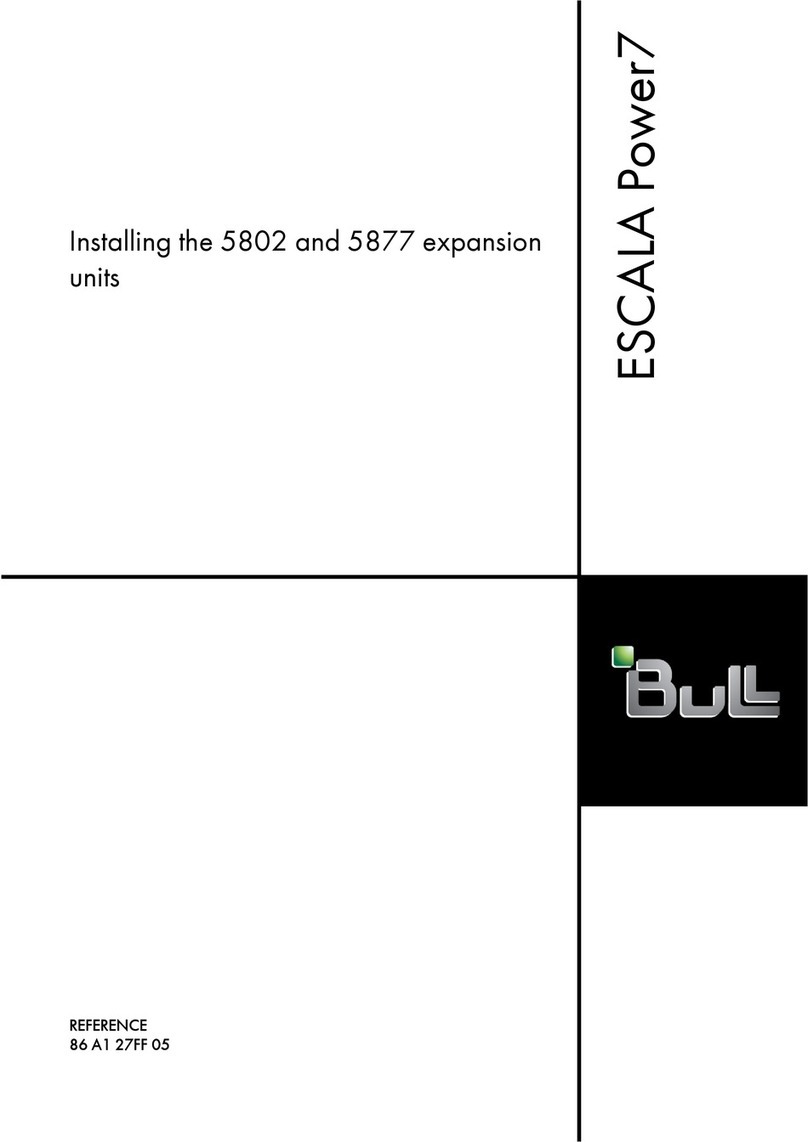
Bull
Bull ESCALA Power7 5802 Installing
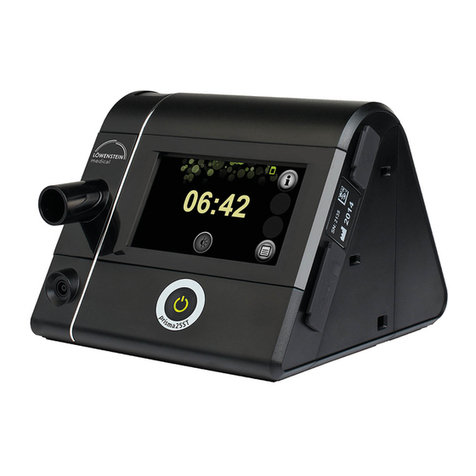
Lowenstein Medical
Lowenstein Medical prismaCONNECT Instructions for use
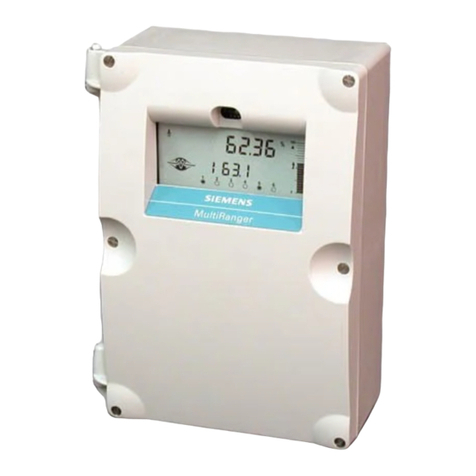
Siemens
Siemens multiranger 200 Application guide

Kessel
Kessel Staufix Instructions for installation, operation and maintenance
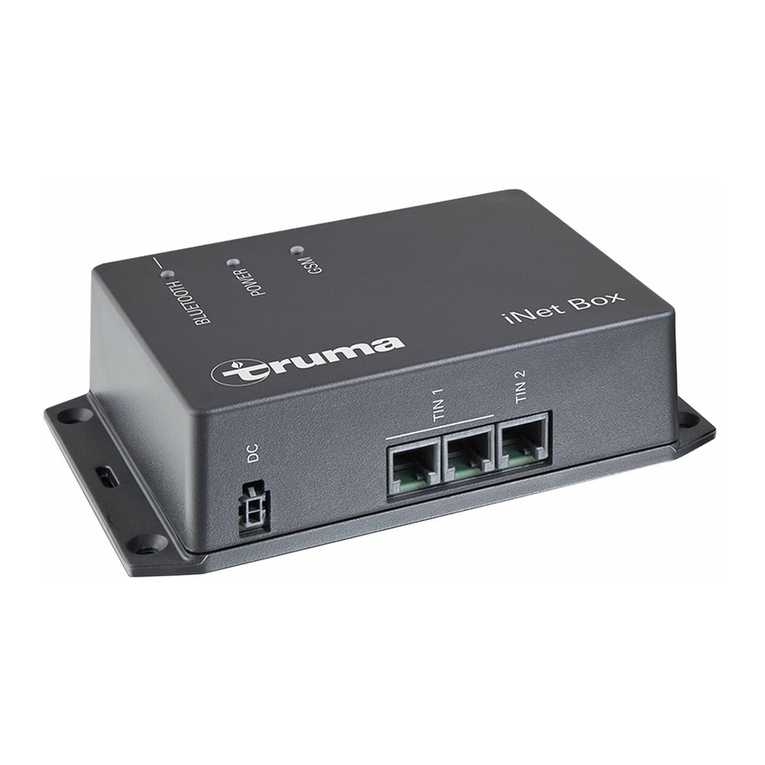
Truma
Truma iNet Box operating instructions
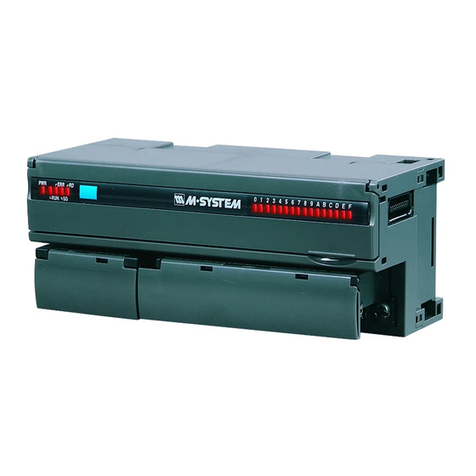
M-system
M-system R7M-EC16A instruction manual
